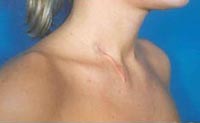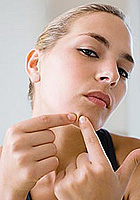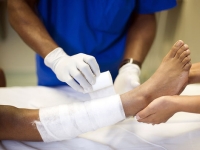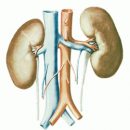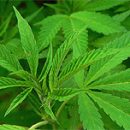What can cause allergies on the skin. Types of skin allergies and symptoms. Treatment of allergies on the skin, antihistamines and anti-allergic ointments.
Content
- Causes of allergy on the skin
- Allergies on the skin and her symptoms
- Treatment of allergies on the skin
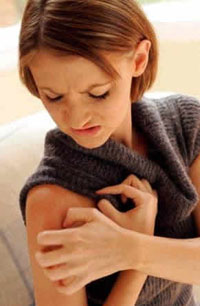
Annotation: Allergies on the skin — This is the reaction of the body to any substance or impact, manifests itself in the form of pathological phenomena on the skin — Powder, redness and itching.Often accompanied by the formation of blisters on the skin and the deterioration of the general condition. There are several types of skin allergies. When allergic symptoms appear, the cause of the cause caused by the disease and the passage of the course of treatment.
Allergies on the skin is not an independent disease, but a consequence of pathological processes occurring inside the body, — In response to the impact of any substance or irritant. Recently, in connection with the deterioration of the environmental situation, there is an increase in allergic diseases around the world.
Causes of allergy on the skin
What is allergy
Allergies call the increased sensitivity of the immune system, leading to a changed reaction to factors often not represent no threat to the body. In response to the impact of the substance that the body regarded as a foreign element (allergen), various symptoms may occur — Rubber, sneezing, eye and skin irritation.
What can cause allergies
Almost any component in the composition of products, household chemicals and cosmetics can perform as an allergen. Most often cause allergies:
- citrus;
- nuts;
- milk;
- honey;
- mold;
- food containing additives;
- dandruff or animal wool;
- household chemicals;
- medications;
- pollen;
- Some types of fabrics.
In most cases, one of the manifestations of allergic reactions are rashes on the skin.
Allergies on the skin and her symptoms
Types of allergies on the skin
Several main types of allergic diseases with skin manifestations are distinguished:
Atopic dermatitis — It is the result of the hypersensitivity of the immune system to the allergen, manifests itself in inflammation of the skin. Can develop against the background of half aulinosis, urticaria, bronchial asthma and other diseases of allergic nature.
Contact dermatitis — arises at the place of contact with an allergen. The subject that provoked an allergic reaction can be clothes, decoration, bed linen, detergent, etc.
Hives — may arise in response not only on allergens, but also on various mechanical and physical stimuli. Skin lesion resembles burns from nettle, which gave the name to this type of pathology.
Sweet Qincke — Hardwriter in heavy form, leading to skin edema, mucous membranes and subcutaneous fatty fiber. It may occur on outdoor genital organs, face and in larynx, often requires urgent medical intervention.
Layella syndrome — Reaction to the introduction into the body of any drugs.
Symptoms of allergy on the skin
Symptoms of skin allergic reactions may differ depending on the type of disease. Atopic dermatitis is characterized by the appearance on the skin of foci of inflammation with clearly defined edges. There is a swelling and redness of the skin, constant itching at the place of defeat; When combing leather, purulent mass appears (secondary pyoderma). General well-being is often sharply deteriorating, they can increase in the size of lymph nodes, to increase body temperature, headaches and lubrication in the body.
With contact dermatitis on the site of contact with an allergen, redness and skin swelling are observed, filled with transparent liquid bubbles appear. After some time, bubbles burst, forming wet erosion on the skin. For urchitsa, the swelling of the nipple layer of the epidermis and the formation of empty blisters on the skin ranging from 0.5 to 15 cm. In the area of inflammation there is redness and strong itching. When switching to Queen's swelling, the swelling of the skin is enhanced, the skin becomes dense and pale, sometimes — with a pinkish tint.
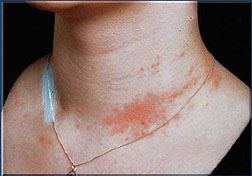
With Layella syndrome, symptoms of body intoxication appear — nausea, vomiting and abdominal pain. There is a sharp deterioration in well-being, there are rashes, resembling cortex. After some time, they turn into a large bubble filled with transparent liquid or blood, erosion is formed after their opening. The disease is accompanied by the symptom of Nikolsky — With the slightest contact, the skin begins to pour.
Treatment of allergies on the skin
With an allergic reaction, allergen should be installed primarily and eliminated. Easy itching with some forms of the disease, compresses with salt or acetate aluminum, warm baths and a contrasting shower helps.
Medical treatment is reduced to several points:
- Reception of antihistamine. One of the drugs are usually prescribed: «Zirtek», «Claritin», «Supratin», «Tueguil», «Phenistil» or «Telfast». The duration of reception and dosage is determined by the doctor.
- In the case of turning rash to dermatitis, corticosteroids are prescribed — «Kenalog» or «Presenice».
- Antiallergic ointments are applied to the removal of itching, redness and burning skin — «Elide» or «Phoenistil gel».
At the same time, it is recommended to temper the body, receiving vitamin complexes and the use of immunomodulators in the form of ointments.



